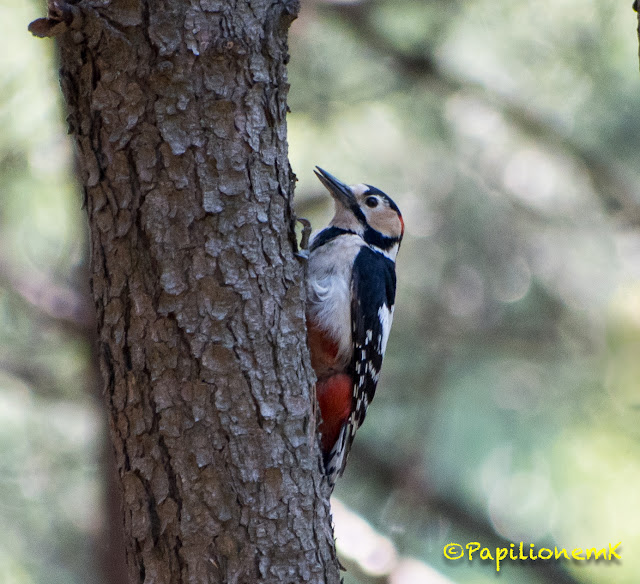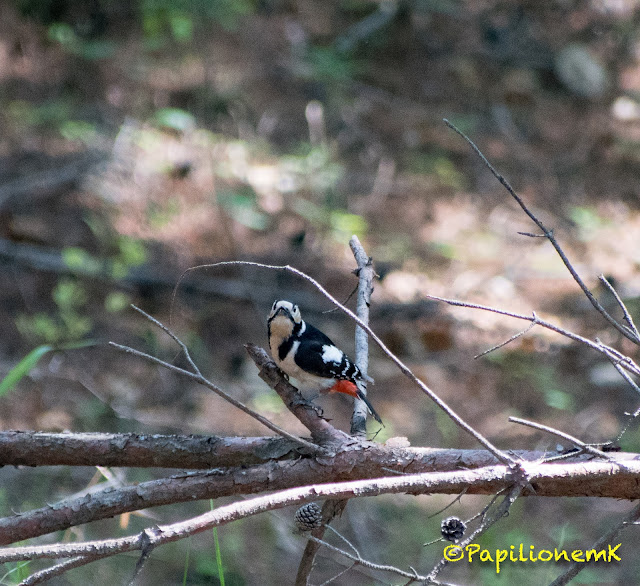 |
| Great Spotted Woodpecker [Dendrocopos major] |
"I am an architect. I build real houses providing shelter, not flimsy nests exposed to rain."

Yes, many of the bird nests are temporary structures supporting the breeding activities and cannot survive till the next breeding season.
Some birds rebuild their nests every time, some repair the old one, some find an abandonded one and claim it their own, some steal other's, and some never build!
In terms of mastership in nest building, I can think of woodpeckers and weavers (belonging to the Family Ploceidae).
Considering all the facts, though, I think woodpeckers deserve the first place.

One of my acquaintance's husband is afraid of woodpeckers visiting his own house, bulit by himself using mostly woods.
But probably, many forest birds seem to welcome woodpecker's professionalism as an architect.
While searching for articles about woodpecker's behavior, I accidently found an interesting one although it was not exactly about woodpecker's behavior.
Łukasz Myczko et al. Co‐occurrence of birds and bats in natural nest‐holes. IBIS. 2017;159(1):235-237
A group of Polish researchers monitored 672 nest-holes, mostly built by Great Spotted Woodpecker, during the spring of 2016.
Out of 672 holes, 271 were occupied by birds, 6 by bats, and 4 simultaneously by bats and birds!
In those 4 cases of simultaneous occupation, coresidents were identified as Noctule Bats and Starlings.
The number of residents in each hole was like following:
Hole 1: 4 Notule Bats + 3 Starlings
Hole 2: 6 Notule Bats + 4 Starlings
Hole 3: 6 Notule Bats + 4 Starlings
Hole 4: 7 Notule Bats + 2 Starlings
Based on their observation, Noctule Bats started co‐occupying holes with breeding Starlings in early May and Starlings let them do.
All Starling chicks successfully fledged from their nests.
This is so fascinating fact!
You can find really interesting photos showing little bats and starling chicks mingled in a narrow hole. Refer to the journal websie (I provided the link in the above)!
And this is a video provided in their article as a supplementary data, which I downloaded it from the journal webside.
The authors speculated two main reasons of nest sharing behavior.
First, it could provide thermal benefit. The more, the warmer.
Second, it could be from shortage of safe and appropriate nest-holes because of aggressive deforestation in European regions.
Whatever the reason, not only birds but bats even benefit from woodpeckers' fine work.
What a surprise!
Nature always makes me wonder.





Comments
Post a Comment